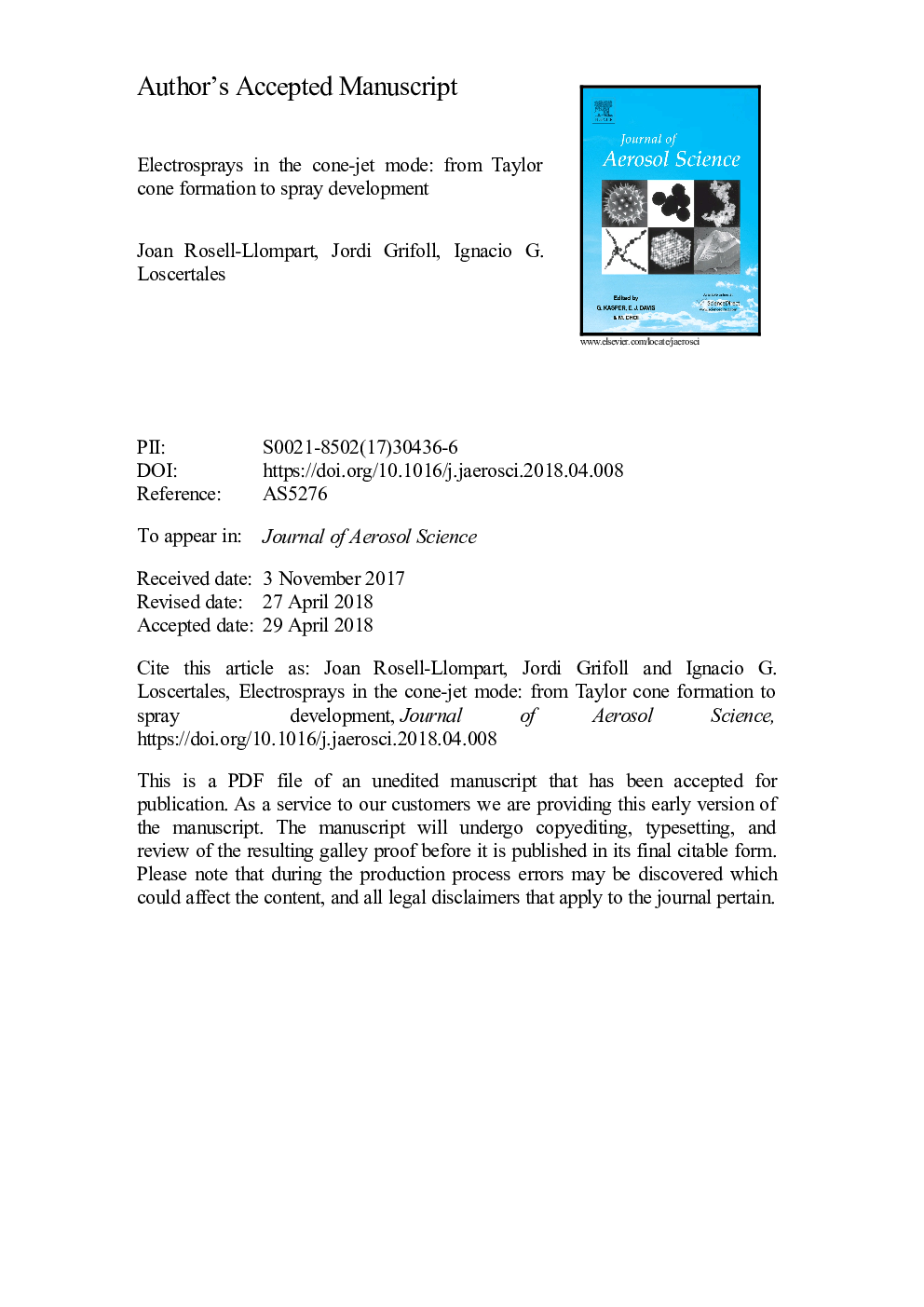| Article ID | Journal | Published Year | Pages | File Type |
|---|---|---|---|---|
| 10223608 | Journal of Aerosol Science | 2018 | 67 Pages |
Abstract
Electrospray is a relatively mature research field, with sustained and growing activity. It has attracted researchers from diverse application fields. Electrospray is perhaps best known as a tool which has enabled the mass spectrometry analysis of large biomolecules (proteins and DNA). It has also been proposed as a colloidal thruster for spacecraft propulsion. And also, it has been used as a general methodology for converting precursor droplets to microspheres and other particle morphologies and films, with controlled nanostructure. In parallel to this body of applied research, other efforts have been aimed at improving the understanding of the underlying physics of electrosprays. While many reviews exist on applications of this system, wherein the physics of the process is described to a certain extent, the present review focuses on the fundamentals. We begin by describing the different modes developing in liquid menisci to which an electrical potential is applied. Due to its applications, the mode of greatest interest is the cone-jet mode in which a steady microscopic jet is emitted and breaks up periodically into uniformly sized droplets. The physics of this mode is then explored in detail, first by reviewing the remarkable effort in the field aimed at identifying so called scaling laws. These are simple scaling relationships connecting the variables of the problem which can be applicable to many operating conditions. We then describe the dynamics of generation of the jet which emerges from the electrified conical meniscus, as well as the physics associated with the spray plume development. We conclude with the extension of these concepts to multi-fluid configurations, such as coaxial and parallel flows.
Keywords
Related Topics
Physical Sciences and Engineering
Earth and Planetary Sciences
Atmospheric Science
Authors
Joan Rosell-Llompart, Jordi Grifoll, Ignacio G. Loscertales,
